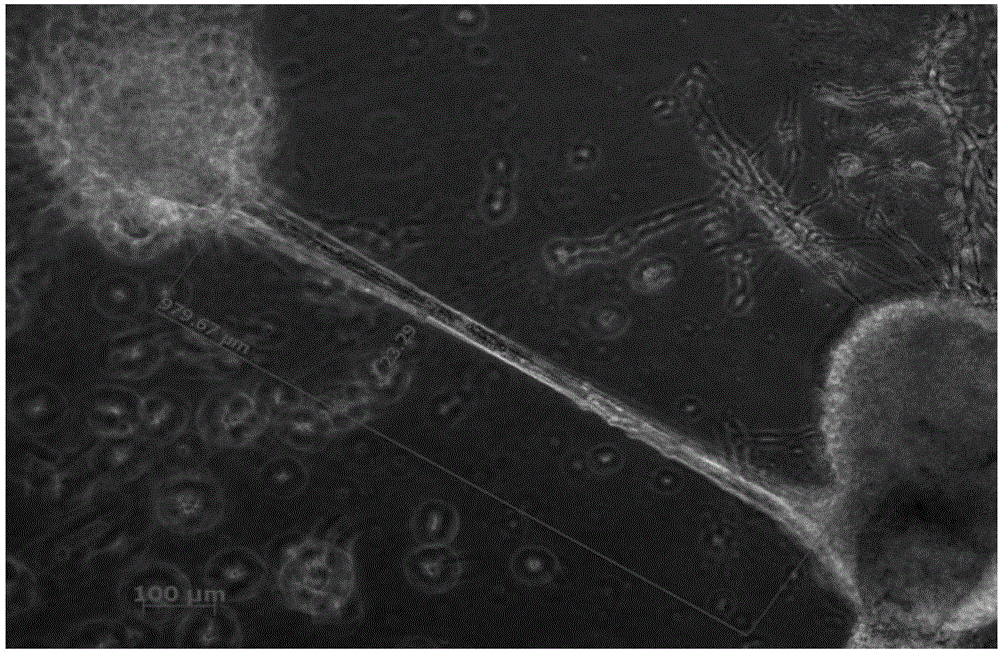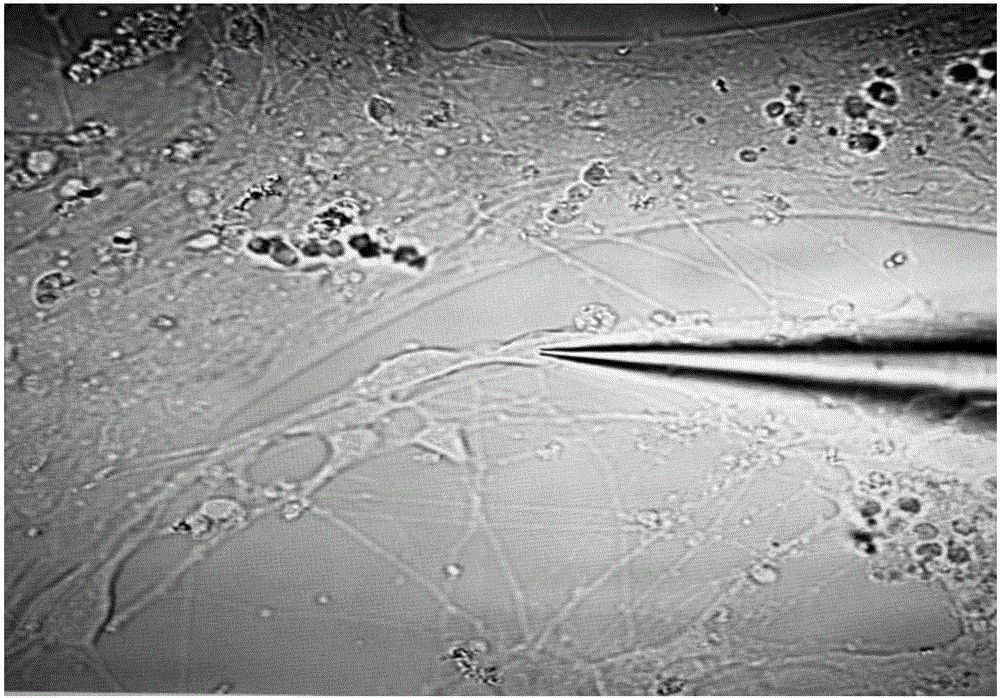Measuring method for cell potential of bioengineering retina nerve scaffold
A technology of bioengineering and measurement methods, applied in the field of stem cell tissue engineering and neurobiology, can solve the problems of low cell survival rate, incomplete growth and differentiation of transplanted cells, integration of host cells, etc.
- Summary
- Abstract
- Description
- Claims
- Application Information
AI Technical Summary
Problems solved by technology
Method used
Image
Examples
Embodiment 1
[0019] 1. Production of bioengineered retinal scaffold (iRP):
[0020] 1. Using the method of mechanical separation, put the nerve fiber layer of human iPSc-derived 3D retina cultured for 50-60 days (specific preparation method reference: XiufengZhong, et al. Generation of three-dimensional retinal tissue with functional photoreceptors from human iPSCs, NatCommun.2014Jun10; 5:4047) Put it into D-Hanks solution, use a 0.45mm needle to separate the tissue under a 50 times upright microscope, discard the pigmented part (pigment layer) in the retinal tissue, and keep the golden yellow tissue part (nerve fiber layer); the separated nerve fiber Use a pipette to transfer the layered tissue to a 3.5cm culture dish, rinse with PBS for 10 minutes; absorb the PBS, digest the cells with accutase cell digestion solution, and place them in a 37°C incubator for 30 minutes; at the end of the process, the cells can be sucked into the centrifuge tube and blown. Under a 10x upright microscope, i...
PUM
 Login to View More
Login to View More Abstract
Description
Claims
Application Information
 Login to View More
Login to View More - R&D
- Intellectual Property
- Life Sciences
- Materials
- Tech Scout
- Unparalleled Data Quality
- Higher Quality Content
- 60% Fewer Hallucinations
Browse by: Latest US Patents, China's latest patents, Technical Efficacy Thesaurus, Application Domain, Technology Topic, Popular Technical Reports.
© 2025 PatSnap. All rights reserved.Legal|Privacy policy|Modern Slavery Act Transparency Statement|Sitemap|About US| Contact US: help@patsnap.com



